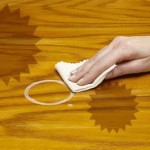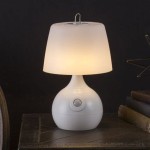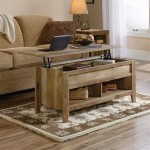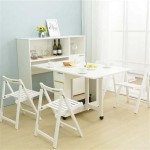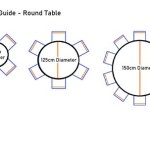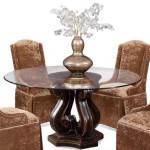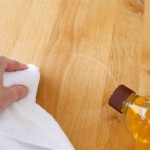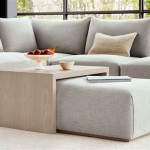```html
Outdoor Counter Height Table for 6: A Comprehensive Guide
The selection of outdoor furniture requires careful consideration, particularly when aiming to accommodate a specific number of individuals. A counter height table designed for six offers a versatile and often space-saving solution for outdoor dining and entertainment. This article delves into the factors associated with selecting an appropriate outdoor counter height table for six, covering materials, dimensions, styles, and maintenance considerations. The objective is to provide a comprehensive understanding that facilitates informed purchasing decisions.
Understanding Counter Height Dimensions and Ergonomics
Counter height tables, as a category, are defined by their height, which typically ranges from 34 to 36 inches. This height necessitates the use of counter height chairs or stools, which have seat heights ranging from 24 to 26 inches. The combination of a counter height table and accompanying seating creates a more elevated dining experience compared to standard height tables. This elevated position can offer improved visibility and promote a more social atmosphere, particularly in outdoor settings.
When selecting a counter height table for six, the table’s dimensions are critical. A table that is too small will feel cramped, while one that is too large may overwhelm the outdoor space. A general guideline is to allocate approximately 24 inches of width per person. Therefore, a table designed for six should have a minimum width of 144 inches if arranged linearly (e.g., a long rectangular table) or a circumference that accommodates this width if round or oval.
Beyond the overall dimensions, consider the leg placement and design of the table. Legs positioned too far inward can restrict legroom, while bulky legs can impede comfortable seating. Look for tables with leg designs that maximize usable space underneath the tabletop. The table's dimensions should also be considered in relation to the outdoor space to ensure that it is appropriately proportioned to its surrounding landscape.
Ergonomics are primarily related to comfort. While counter height seating is generally comfortable for shorter periods, back support becomes increasingly important for longer meals or gatherings. Consider chairs with backrests and footrests to enhance overall comfort. Cushions are also a significant consideration, enhancing comfort and aesthetic appeal. A well-designed counter height table set prioritizes both functionality and comfort, creating a welcoming and enjoyable outdoor dining experience.
Material Considerations for Outdoor Durability
The material composition of an outdoor counter height table significantly impacts its durability, longevity, and aesthetic appeal. Several materials are commonly used, each with its own advantages and disadvantages.
Wood: Wood offers a classic and natural aesthetic. Teak is a particularly popular choice for outdoor furniture due to its high oil content, which makes it naturally resistant to moisture, rot, and insects. Other hardwoods, such as acacia and eucalyptus, can also be suitable options, but they may require more frequent maintenance, such as regular sealing or staining, to protect them from the elements. Softwoods, like pine, are generally less durable and require extensive treatment to withstand outdoor conditions. Wooden tables should be inspected regularly for cracks, splinters, or signs of decay. Proper maintenance, including cleaning and sealing, can significantly extend the lifespan of a wooden outdoor table.
Metal: Metal tables offer durability and weather resistance. Aluminum is a lightweight and rust-resistant option, making it suitable for coastal environments. Steel is stronger than aluminum but is susceptible to rust if not properly treated with a powder coating or other protective finish. Cast iron is extremely durable and heavy, making it a stable option, but it is also prone to rust and requires regular maintenance. Metal tables can also become very hot in direct sunlight, requiring the use of table umbrellas or protective coverings. The choice of metal depends on the desired level of durability, weight, and maintenance requirements.
Resin/Plastic: Resin and plastic tables are lightweight, easy to clean, and resistant to moisture and insects. High-density polyethylene (HDPE) is a particularly durable type of plastic that is resistant to fading and cracking. Recycled plastic is another sustainable option that offers similar benefits. However, resin and plastic tables may not be as aesthetically appealing as wood or metal options. They can also be less stable in windy conditions due to their lightweight nature. The quality of the resin or plastic material significantly affects its durability and longevity.
Stone/Concrete: Stone and concrete tables offer exceptional durability and a modern aesthetic. They are resistant to weather, insects, and fading. However, they are also extremely heavy, making them difficult to move. Concrete tables may require sealing to prevent staining and water damage. The weight of these tables necessitates careful consideration regarding placement and support. Additionally, stone and concrete can be cold to the touch, requiring the use of placemats or tablecloths for added comfort.
Ultimately, the best material for an outdoor counter height table depends on the specific climate, the desired aesthetic, and the level of maintenance that the user is willing to perform. Consider all these factors when making a selection.
Styles and Design Considerations for Outdoor Aesthetics
Outdoor counter height tables are available in a variety of styles to complement different outdoor aesthetics. The selection of a specific style should align with the overall design of the patio, deck, or garden.
Modern: Modern outdoor tables often feature clean lines, minimalist designs, and neutral colors. They may incorporate materials like aluminum, stainless steel, or concrete. These tables often prioritize functionality and simplicity. Modern styles are well-suited for contemporary homes and outdoor spaces.
Traditional: Traditional outdoor tables tend to incorporate classic designs, ornate details, and warm colors. They may feature materials like wood, wrought iron, or wicker. Traditional styles often evoke a sense of elegance and sophistication. They are well-suited for more formal outdoor settings.
Rustic: Rustic outdoor tables emphasize natural materials, weathered finishes, and a sense of informality. They may incorporate reclaimed wood, stone accents, or distressed metal. Rustic styles often create a cozy and inviting atmosphere. They are well-suited for casual outdoor spaces and country-style homes.
Coastal: Coastal outdoor tables often feature light colors, nautical themes, and materials like wicker, rattan, or painted wood. They may incorporate elements like rope accents or sea-inspired patterns. Coastal styles create a relaxed and breezy atmosphere. They are well-suited for homes near the beach or with a nautical theme.
Beyond style, consider the color and finish of the table. Lighter colors can reflect sunlight and keep the table cooler, while darker colors can absorb heat and become uncomfortable to touch. The finish should be durable and weather-resistant to prevent fading, chipping, or peeling. The tables shapes can also impact the design of the outdoor space. A round table can encourage conversation, while a rectangular table can maximize seating capacity. The overall aesthetic of the table should complement the surrounding landscape and create a cohesive outdoor living space.
The choice of seating also plays a crucial role in the overall aesthetic. Counter height chairs or stools should complement the style of the table and provide comfortable seating for guests. Mixing and matching different styles can create an eclectic and visually interesting look, but it is important to maintain a sense of balance and harmony. Accessorizing the table with cushions, placemats, and other decorative items can further enhance its aesthetic appeal. Ultimately, the goal is to create an outdoor dining space that is both functional and visually appealing.
Maintenance and Care for Extended Lifespan
Proper maintenance is essential for extending the lifespan of an outdoor counter height table. The specific maintenance requirements vary depending on the material of the table.
Wood: Wooden tables should be cleaned regularly with a mild soap and water solution. Avoid using harsh chemicals or abrasive cleaners, as they can damage the finish. Apply a sealant or stain periodically to protect the wood from moisture, UV rays, and insects. Inspect the table regularly for cracks, splinters, or signs of decay. Sand down any rough spots and apply a fresh coat of sealant or stain. Store wooden tables indoors or cover them with a waterproof cover during the off-season to protect them from the elements. Regular cleaning and sealing are crucial for maintaining the beauty and durability of a wooden outdoor table.
Metal: Metal tables should be cleaned regularly with a damp cloth and mild soap. Avoid using abrasive cleaners, as they can scratch the finish. Inspect the table for rust or corrosion. Remove any rust with a wire brush or sandpaper and apply a rust-resistant primer and paint. Apply a protective coating to prevent future rust. Store metal tables indoors or cover them with a waterproof cover during the off-season. Regular cleaning and rust prevention are essential for maintaining the appearance and integrity of a metal outdoor table.
Resin/Plastic: Resin and plastic tables are relatively easy to clean with soap and water. Remove any stubborn stains with a mild bleach solution. Avoid using abrasive cleaners, as they can scratch the surface. Inspect the table for cracks or fading. Protect the table from direct sunlight to prevent fading. Store resin and plastic tables indoors or cover them with a waterproof cover during the off-season. Regular cleaning and protection from sunlight are crucial for maintaining the appearance and durability of a resin or plastic outdoor table.
Stone/Concrete: Stone and concrete tables should be cleaned regularly with a brush and water. Use a pressure washer to remove stubborn stains or dirt. Apply a sealant to protect the table from staining and water damage. Avoid using harsh chemicals or abrasive cleaners, as they can damage the surface. Inspect the table for cracks or chips. Repair any cracks or chips with a concrete patching compound. Store stone and concrete tables outdoors year-round, as they are extremely heavy and difficult to move. Regular cleaning and sealing are essential for maintaining the appearance and durability of a stone or concrete outdoor table.
In addition to material-specific maintenance, consider protecting the table from the elements with a table umbrella or outdoor cover. These measures can help to prevent fading, cracking, and other damage caused by sun, rain, and wind. Regularly inspect the table for loose screws or bolts and tighten them as needed. By following these maintenance tips, you can extend the lifespan of your outdoor counter height table and enjoy it for many years to come.
```
Modern Rectangle 6 Person Extendable Outdoor Patio Dining Table In Gray Black

Patio Festival 6 Piece Metal Bar Height Outdoor Dining Set With Gray Cushions Pf19032x2 142x2 The Home

7 Pieces Outdoor Patio Bar Dining Set For 6 Person With Teak Top Table And Chairs

Paradise Trail Outdoor Counter Height Dining Table With 6 Barstools

6 Person Outdoor Patio Dining Set Sets At Lowes Com

Chateau 7 Piece Outdoor Dining Set 66 Round Stone Harbor Table And 6 Chairs Laura S Home Patio

Luxcraft 4 X 6 Rectangle Table Set W Swivel Chairs Amish Yard

7 Pieces Teak Outdoor Dining Set Wood Round Table With 6 Chairs In Natural Homary

Patio Festival 6 Piece Wicker Bar Height Outdoor Dining Set With Beige Cushions Pf19032x2 141x2 The Home

6 8 Person Extenable Outdoor Dining Table Phi Villa

